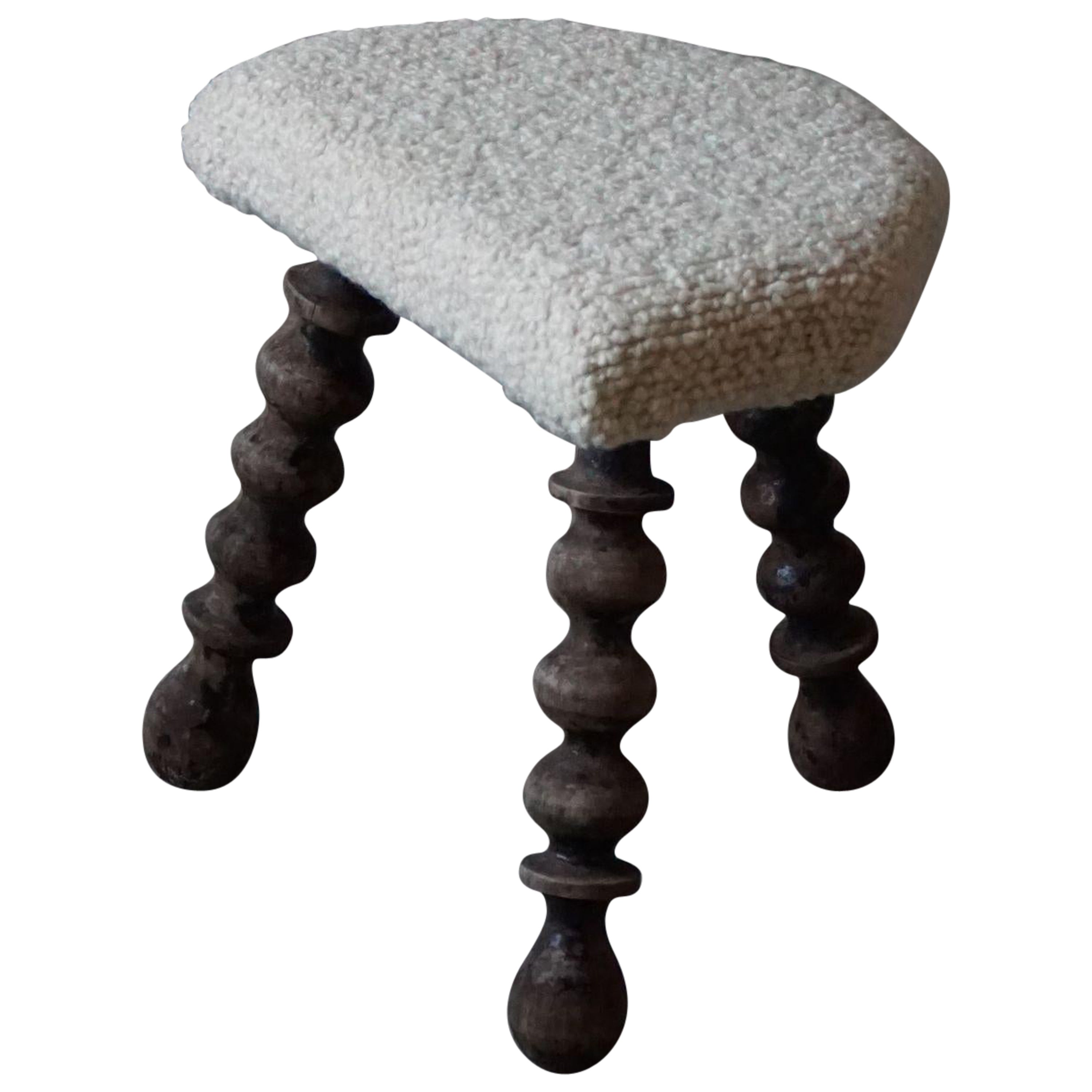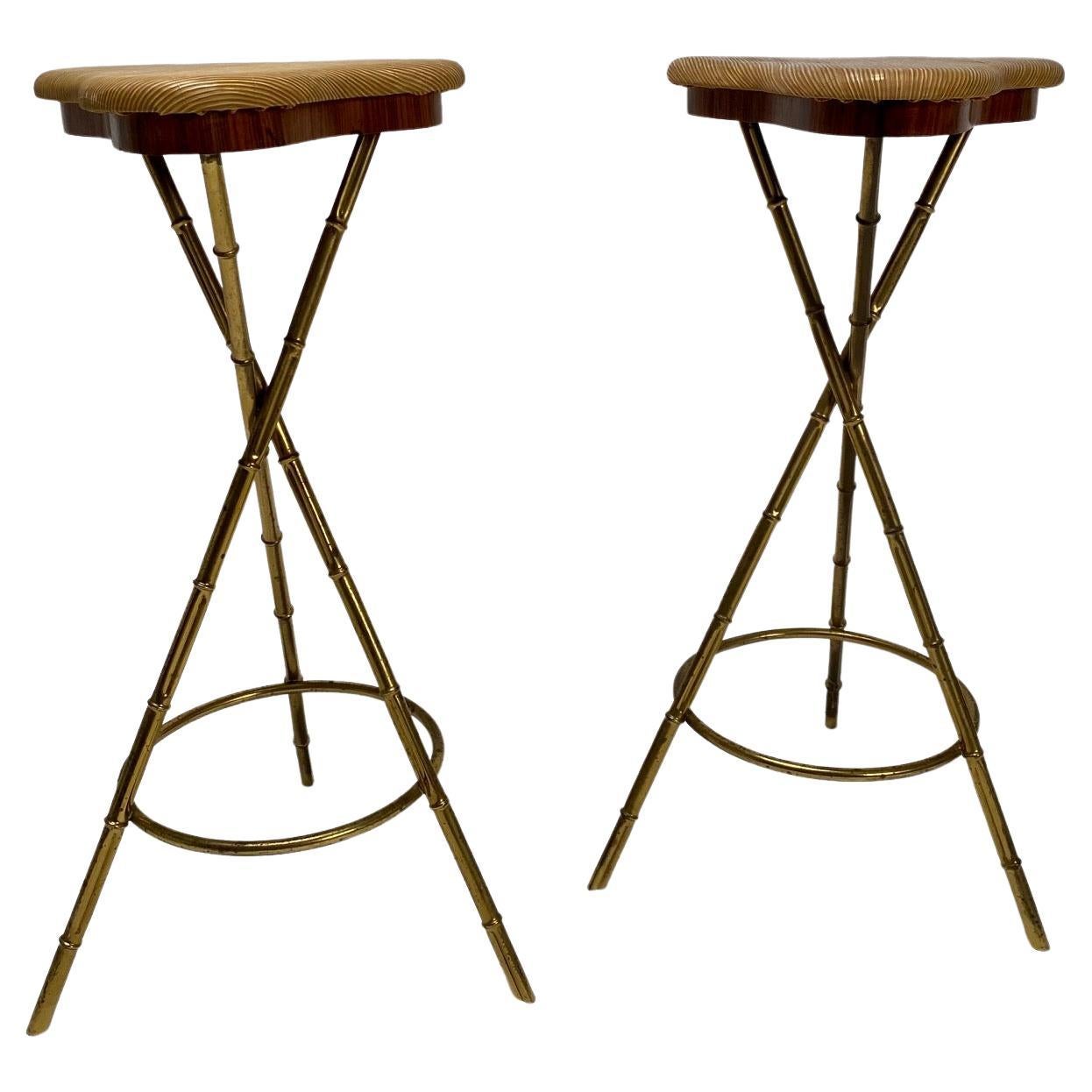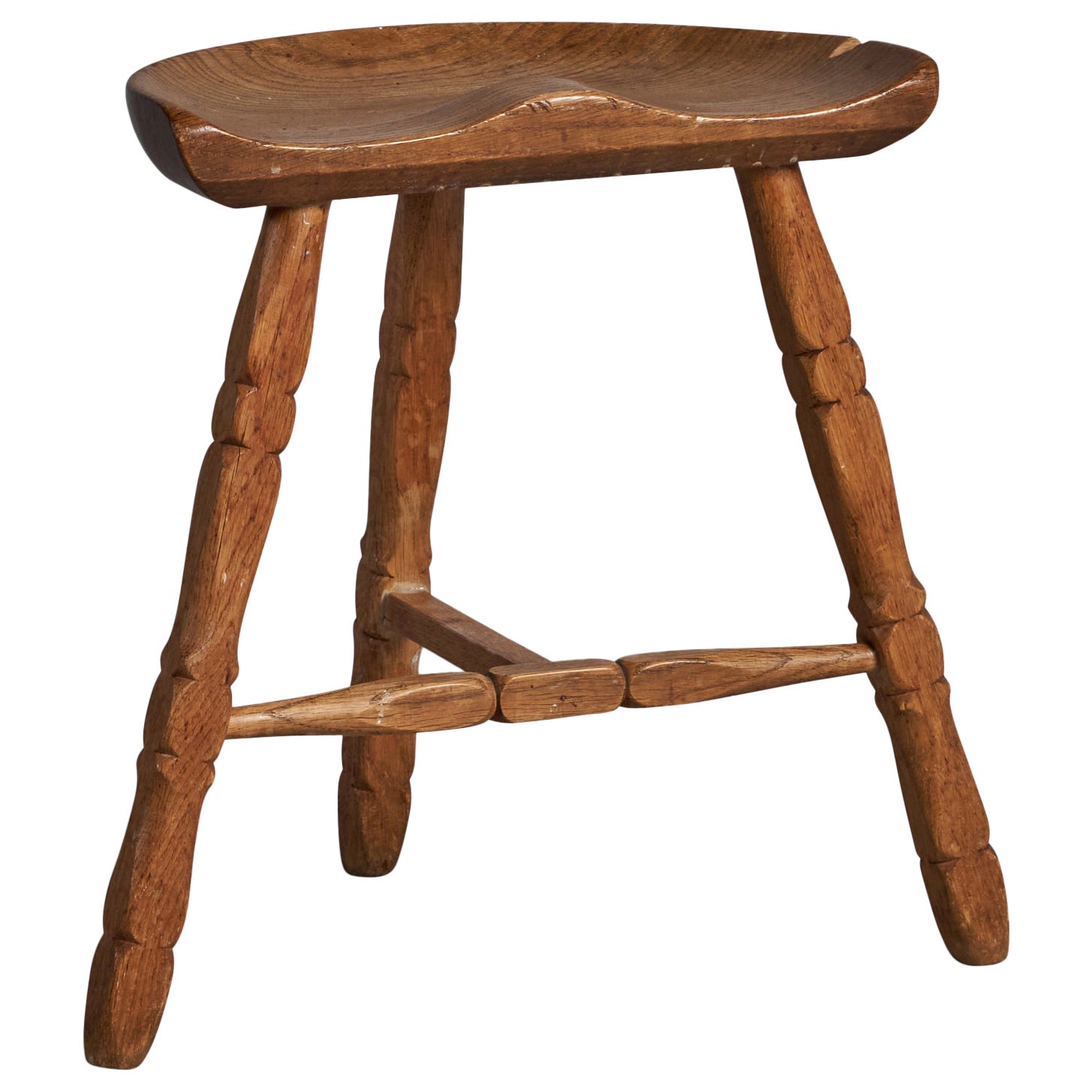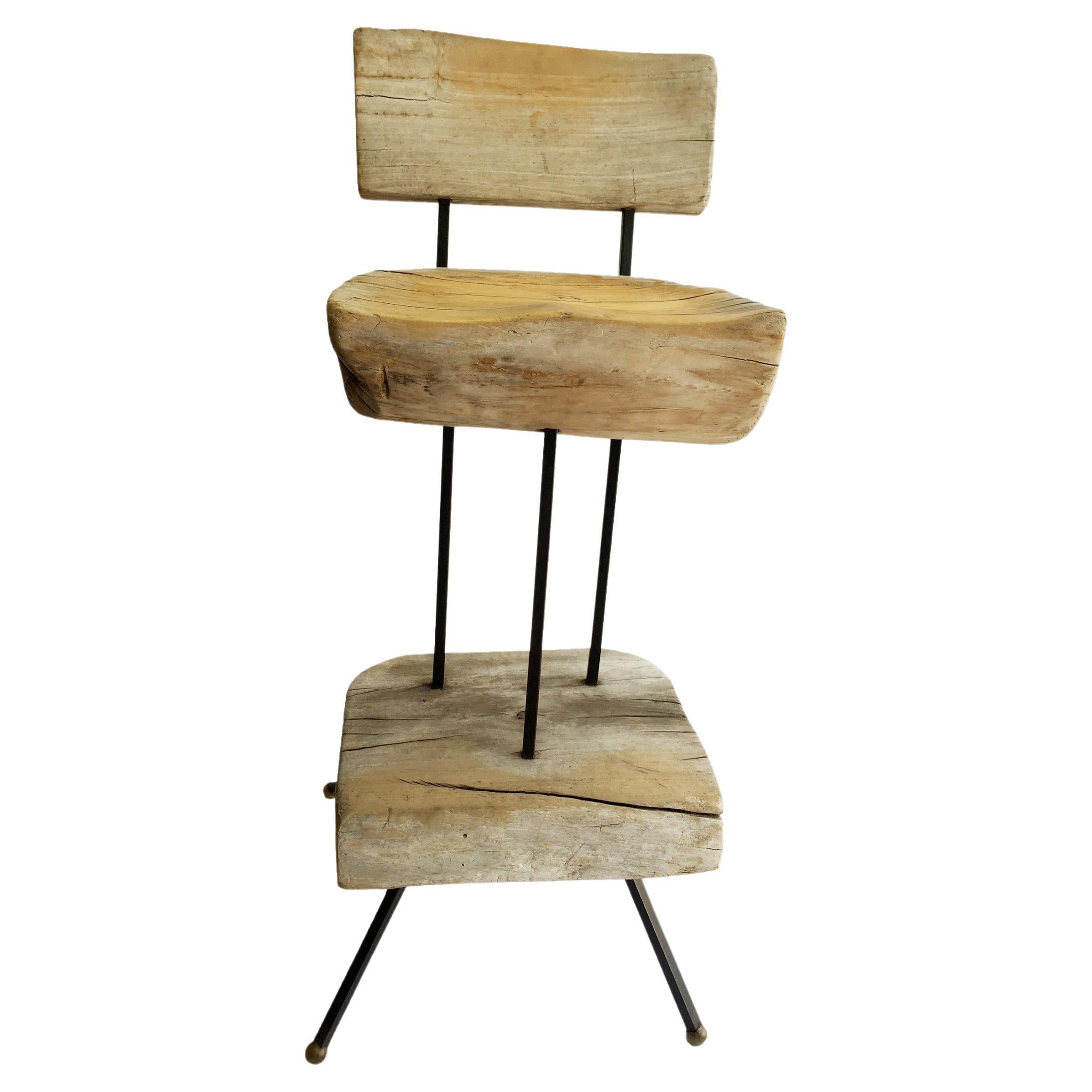Items Similar to Stool, Anonymous, Denmark, 1950s
Want more images or videos?
Request additional images or videos from the seller
1 of 10
Stool, Anonymous, Denmark, 1950s
About the Item
Stool, anonymous,
Denmark. 1950s.
Teak.
Measurements:
H: 50 cm / 1' 7 3/4"
W: 40 cm / 1' 3 1/4"
D: 23 cm / 9".
- Dimensions:Height: 19.69 in (50 cm)Width: 15.75 in (40 cm)Depth: 9.06 in (23 cm)Seat Height: 19.69 in (50 cm)
- Style:Mid-Century Modern (Of the Period)
- Materials and Techniques:
- Place of Origin:
- Period:
- Date of Manufacture:1950s
- Condition:
- Seller Location:Stockholm, SE
- Reference Number:1stDibs: LU1006628951342
About the Seller
5.0
Recognized Seller
These prestigious sellers are industry leaders and represent the highest echelon for item quality and design.
Gold Seller
These expertly vetted sellers are highly rated and consistently exceed customer expectations.
Established in 1998
1stDibs seller since 2013
184 sales on 1stDibs
Typical response time: 1 hour
- ShippingRetrieving quote...Ships From: Stockholm, Sweden
- Return PolicyA return for this item may be initiated within 2 days of delivery.
More From This SellerView All
- Pair of Stools, Anonymous, Denmark, 1950sLocated in Stockholm, SEBeech legs and original wool upholstery. Measures: 46 cm/ 18" W 40 cm/ 15 3/4" H 24 cm/ 9 1/2" for lower side and 36 cm/ 14 1/4" for the higher one.Category
Vintage 1950s Swedish Scandinavian Modern Coffee and Cocktail Tables
MaterialsWool, Beech
- Stool Model 927 Designed by Josef Frank for Svenskt Tenn, Sweden, 1950sBy Josef FrankLocated in Stockholm, SEStool model 927 designed by Josef Frank for Svenskt Tenn, Sweden, 1950s. Mahogany and rattan. Measures: H: 43 cm W: 43 cm D: 28 cm Josef Frank was a true European, he was also a pioneer of what would become classic 20th century Swedish design and the “Scandinavian Design Style”. Austrian- born Frank started his design career as an architect after having trained at the Technische Hochschule in Vienna between 1903 and 1910. After his training he went on to teach at Kunstgewerbeschule (The Viennese School of Arts and crafts) where he developed and espoused the new school of modernist thinking towards Architecture and Design that was coming to fruition in Vienna at the time. He also went on to lead the Vienna Werkbund throughout the 1920s. This was a truly progressive group of Architects and Designers who set about improving the daily lives of Austrian people through modernist design and architecture in partnership with Arts and Crafts ideals and construction. Frank’s leadership of the Werkbund had already cemented his place at the forefront of European design. Frank’s time in Vienna was typified by his design for the “Die Wohnung” exhibition of the Deutscher Werkbund in Stuttgart, 1927 where he exhibited along side his contemporaries at the forefront of design, such as the likes of Le Corbusier and Walter Gropius. Here he showed a specially designed pair of flat-roofed reinforced concrete houses in what is now seen as a typical modernist style. What separated Frank’s house from the other 32 houses of the exhibition was the interior and furniture inside the building. It was described as “Neo-Classical” and filled with an eclectic mix of period pieces, modern design and pieces designed by Frank himself that seemed to cross the two worlds. This was a complete opposite direction to that which his fellow Architects were travelling in with their pared back and angular aesthetics. Frank said of his own work: “The house is not a work of art, simply a place where one lives,” and by this reasoning Frank rejected the regimental mechanisation of the living space that his contemporaries believed in, instead he set about creating congenial and spontaneous interiors. Frank’s practice saw him placing the bright colours and the soft forms of nature back into the furnishings and interiors that he thought modernism sorely mist. Frank, along with Oskar Walch set up Haus und Garten in Vienna in 1925. This was Frank’s first commercial foray into furniture and home furnishings and the company went on to become the most influential furnishing house in Vienna with a riotous depth of colour and interesting shapes becoming the trademark of their design. However this success was to come to an end with rise of Nazism in Vienna in the early 1930’s. Frank was Jewish, and he and his wife Anna decided they would leave Vienna for her motherland: Sweden, in 1933. Frank continued to design for Haus and Garten, visiting Vienna occasionally and designing the pieces that would continue to be the company’s best sellers long after Frank was forced to hand the company over in 1938 after the Third Reich annexation of Austria. When Josef and Anna had moved to Sweden Frank had struck up a working relationship with Design shop owner Estrid Ericson. Ericson was the proprietor of Svenskt Tenn that at this point was a successful interiors shop in Stockholm with the royal warrant of appointment to the Swedish Royal Household. In 1935 Frank had become the chief designer for Svenskt Tenn and had set about putting all of his creative effort into his designs for the company. At the World Expositions in Paris in 1937 and New York in 1939 the world saw for the first time the wealth of products that Frank had been working on, ranging from candlesticks to cabinets, there was not a domestic object that Frank had not subjected to his colourful, comfortable and organic style of Modernism. Frank’s new school of Modernism championed ideas such as chairs having a freeing, open back and that “If one desires the room to be comfortable…all pieces of furniture should allow for a free view of the separating line between the floor and the wall. A cabinet without legs breaks this line and thus reduces the feeling of space.” A world-wide audience tired of classic Modernism’s furniture with solid planes and aggressive forms leapt upon these ideas and Franks natural and bright designs for Svenskt Tenn became internationally desired. Frank created over 2000 designs for Svenskt Tenn and his products continue to be the core of their brand. Frank’s rejections of tubular metal and heavy lacquers within his furniture have insured his unique light form of Modernism continues to influence and flourish today. His natural toned mahogany and walnut pieces along with his tactile leather covered and brightly shaded lighting still bring the forms of nature back into the home. Original Frank pieces are now increasingly rare, highly desirable and are the epitome of “Scandinavian Design”. Renowned Designer and Academic Isle Crawford...Category
Vintage 1950s Swedish Mid-Century Modern Chairs
MaterialsRattan, Mahogany
- Pair of easy chairs, anonymous, Finland, 1950sLocated in Stockholm, SEPair of easy chairs, anonymous, Finland, 1950s. Wool upholstery and lacquered wood. H: 68 cm W: 75 cm D: 82 cm SH: 44 cmCategory
Vintage 1950s Finnish Mid-Century Modern Chairs
MaterialsWool, Wood, Lacquer
- Occasional Table Anonymous, Denmark, 1950sLocated in Stockholm, SEOccasional table anonymous, Denmark. 1950s. Brazilian rosewood. Irregular form. Dimensions: H: 58 cm/ 22 3/4'' L: 80 cm/ 31 1/2'' D: 60 cm/ 23 1/2''Category
Vintage 1950s Swedish Scandinavian Modern Coffee and Cocktail Tables
MaterialsRosewood
- Pair of lacquered pine stools, anonymous, Sweden, 1930sLocated in Stockholm, SEPair of stools, anonymous, Sweden, 1930s Lacquered pine. H: 43.5 cm / 17 1/4'' W: 50 cm / 19 3/4'' D: 26.5 cm / 10 1/2''Category
Vintage 1930s Swedish Mid-Century Modern Stools
MaterialsPine, Lacquer
- Desk/Dining Table, Anonymous, Denmark, 1950sLocated in Stockholm, SEDesk/dining table, anonymous, Denmark, 1950s. Teak top with lacquered wood base. Measures: H 72 cm/ 28 ½” L 175 cm/ 5' 9” D 75 cm/ 29 ½”.Category
Vintage 1950s Danish Scandinavian Modern Desks and Writing Tables
MaterialsTeak
You May Also Like
- Mid-Century Modern Stool, Curled Legs, Oak & Bouclé, Danish Cabinetmaker, 1950sLocated in Odense, DKA beautiful oak stool with carved legs, manufactured and designed in Denmark by a Danish Cabinetmaker, 1950s. Reupholstered in luxury Bouclé, Storr 1501 (Eggshell) from bute fabric....Category
Mid-20th Century Danish Art Deco Stools
MaterialsWool, Bouclé, Oak
- Cognac Mid-Century Modern Stool, France, 1950sLocated in Antwerp, BEMid-century modern stool, crafted in France during the 1950s. The design boasts a sturdy framework composed of elegantly shaped wooden cylinders, ensuring exceptional comfort. The seating is adorned in a rich, dark cognac leather that showcases a remarkable patina, adding a touch of timeless sophistication. We have one stool available, in perfect condition. Check out our Goldwood storefront for more mid-century pieces and complete the set with three cognac dining chairs.Category
Vintage 1950s French Mid-Century Modern Stools
MaterialsLeather, Wood
- Mid-Century Italian Bar Stools, Brass, 1950sBy Gio PontiLocated in Argelato, BORefined pair of midcentury Italian bar stools with structure in wood and brass, coming from an important villa on como lake. The brass ...Category
Vintage 1950s Italian Mid-Century Modern Stools
MaterialsBrass
- 1950s Fully Restored Danish StoolLocated in Knebel, DK1950s Fully restored danish stool. The stool feature a simple and elegant design with it's curved upholstered seat on top of it's four fluted chair leg...Category
Vintage 1950s Danish Scandinavian Modern Footstools
MaterialsBeech
- Danish Designer, Stool, Oak, Denmark, 1950sLocated in High Point, NCA solid oak stool, designed and produced in Denmark, 1950s.Category
Vintage 1950s Danish Mid-Century Modern Stools
MaterialsOak
- Wood and Iron Bar Stool by Sabena 1950sLocated in New York, NYThis wood and iron bar stool was made by Sabena in Mexico circa 1950s. The stool is composed of an iron frame and a split log seat and back. This unique pie...Category
Mid-20th Century Mexican Chairs
MaterialsIron
Recently Viewed
View AllMore Ways To Browse
Mid Century Tripod Stools
Stool Brass Painted
Clean Bar Stool
Tan Cowhide
Umanoff Wood
Small Black And White Art Pieces
Painted Cottage Bedroom Furniture
Counter Top Stools
Saddle Bar Stools
Antique Piano Stool
Mid Century Modern Bar Stool Chairs
Pair Of Italian Wood Stools
Pair Mahogany Stools
Carved Foot Stool
Garden Stools Pair
30 Bar Stools
Counter Stools Portuguese
Round Stool Upholstered





